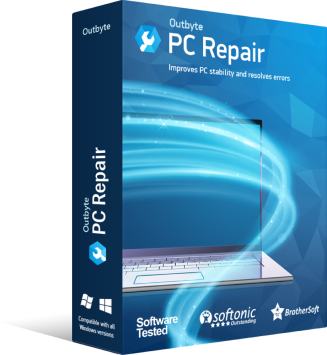Repair Utility
- File name: pc-repair-setup.exe
- Tool''s Developer: Outbyte
- Certified by: Symantec
- Download Size: 24 MB
- Downloaded: 1,143,473 times
-
Rating:

 Start Download
Start Download
Windows Operating Systems



802.11n WiFi Adapter Driver Download
Wireless connectivity has become a cornerstone of modern computing, and a functioning WiFi adapter is essential for seamless internet access. However, users of 802.11n WiFi adapters often face driver-related issues that disrupt their connection. Whether you’re dealing with sudden disconnections, slow speeds, or complete failure to detect networks, downloading and installing the right driver can resolve most problems. This article explores the root causes of driver issues, provides a step-by-step guide to fixing them, and summarizes key takeaways for maintaining stable wireless performance.
1. Causes of 802.11n WiFi Adapter Driver IssuesDriver problems for 802.11n WiFi adapters typically stem from software conflicts, outdated systems, or human error. Below are the most common reasons users encounter issues:
- Outdated or Corrupted Drivers: Over time, drivers may become outdated due to Windows updates or software changes. Corruption can occur during incomplete installations, sudden system shutdowns, or malware attacks.
- Accidental Deletion or Uninstallation: Users might unintentionally remove the driver while cleaning up system files or troubleshooting unrelated software.
- Operating System Upgrades: New OS versions (e.g., upgrading from Windows 10 to 11) often require updated drivers. Legacy 802.11n drivers may not be compatible with newer systems, leading to connectivity failures.
- Incorrect Driver Version: Installing a driver meant for a different adapter model or hardware revision can cause malfunctions. This often happens when users download drivers from unofficial sources.
- Hardware Conflicts: Other devices or recently installed hardware might interfere with the WiFi adapter’s functionality, creating driver conflicts.
Understanding these causes helps pinpoint the right solution. The next section outlines actionable steps to resolve driver issues efficiently.
2. Step-by-Step Guide to Downloading and Installing 802.11n WiFi Adapter Drivers- Step 1: Identify Your Adapter Model
Before downloading a driver, confirm the exact model of your 802.11n WiFi adapter.
- Open
Device Manager(pressWindows + Xand select it from the menu). - Expand the Network adapters section.
- Locate your 802.11n adapter (e.g., “Intel® Wireless-N 7260” or “TP-Link TL-WN822N”). Right-click it and select Properties > Details > Hardware Ids. Note the VEN_ and DEV_ codes, which identify the manufacturer and device.
- Open
- Step 2: Download the Correct Driver
- Visit the official website of your adapter’s manufacturer (e.g., Intel, TP-Link, Dell). Use their support or downloads section to search for your model.
- If the manufacturer’s site doesn’t list the driver, use the Hardware Ids from Step 1 on platforms like PCI Database (www.pcidatabase.com) to identify the chipset and find compatible drivers.
- Ensure the driver matches your OS version (e.g., Windows 10 64-bit).
- Step 3: Install the Driver
- Method 1: Manual Installation
- In Device Manager, right-click the adapter and select Uninstall device. Check Delete the driver software if prompted.
- Restart your PC. Windows may automatically reinstall a generic driver.
- Open the downloaded driver file (usually a
.exeor.zip). Follow the on-screen instructions to complete the installation.
- Method 2: Update via Device Manager
- Right-click the adapter in Device Manager and select Update driver.
- Choose Browse my computer for drivers and navigate to the downloaded driver folder.
- Method 1: Manual Installation
- Step 4: Troubleshoot Post-Installation Issues
- If the adapter still malfunctions, disable power-saving settings:
- In Device Manager, right-click the adapter > Properties > Power Management. Uncheck Allow the computer to turn off this device.
- Reset your network settings via Settings > Network & Internet > Network Reset.
- If the adapter still malfunctions, disable power-saving settings:
- Step 5: Use Driver Updater Tools (Optional)
Third-party tools like Driver Booster or Snappy Driver Installer can automate driver updates. However, download these only from trusted sources to avoid malware.
A faulty 802.11n WiFi adapter driver can cripple your ability to connect to the internet, but resolving the issue is often straightforward. By identifying the root cause—whether it’s an outdated driver, OS incompatibility, or incorrect installation—you can take targeted steps to restore functionality. Always prioritize drivers from official manufacturer websites to avoid compatibility risks, and regularly check for updates to keep your system optimized.
For older 802.11n adapters, consider upgrading your hardware if driver support has been discontinued. Modern WiFi standards like 802.11ac or WiFi 6 offer faster speeds and better reliability, ensuring future-proof connectivity. By following this guide, you can resolve driver issues efficiently and enjoy uninterrupted wireless performance.
|
Learn how to set up your HP LaserJet P1102w printer effortlessly with this detailed guide. Follow step-by-step instructions to unbox, connect to power and Wi-Fi, install drivers, and configure settings for seamless wireless printing. Perfect for home or office use, this tutorial ensures quick installation and troubleshooting tips for common issues.
|
|
Ensure seamless connectivity and maximize your wireless network's potential with the latest 802.11n driver. This guide provides steps to download and update your driver, enhancing speed, reliability, and security. Compatible with older hardware, a properly updated driver resolves connectivity issues, reduces latency, and optimizes signal strength for smoother browsing, streaming, and gaming. Download trusted versions for your OS today!
|
|
Download Bluetooth software for free and enjoy fast, secure connections between your devices. Experience seamless pairing, stable performance, and enhanced security protocols for effortless data transfers.
|
|
Keep your PC running smoothly with our step-by-step guide to updating graphics card drivers. Learn how to identify your GPU model, use built-in tools like Device Manager, or leverage manufacturer software (NVIDIA, AMD, Intel) for automatic updates. Ensure optimal performance, fix bugs, and enjoy compatibility with the latest games and applications in minutes!
|
|
Learn how to quickly set up your Epson L3250 all-in-one printer for seamless printing, scanning, and copying. This guide covers unboxing, ink cartridge installation, power and USB/Wi-Fi connections, software installation, and print head alignment. Follow step-by-step instructions to ensure smooth setup and optimize your printer’s performance for home or office use.
|
|
To reset your Epson L3150 printer, start by turning it on. Press and hold the Power button and the Maintenance button (circular arrow icon) simultaneously for 5-10 seconds until the power light flashes. Release both buttons—the printer will restart automatically. This clears error codes, resets ink counters, and restores default settings. For a full reset (e.g., after replacing ink pads), use the Epson Resetter Tool (available online) or consult the manual. Always ensure ink levels are sufficient post-reset.
|
|
Need to troubleshoot your Epson L3150 printer? This quick guide provides step-by-step instructions to reset your device and download the latest software. Learn how to navigate settings, perform a factory reset, and ensure proper driver installation for seamless printing. Perfect for resolving errors, connectivity issues, or preparing your L3150 for renewed performance.
|
|
Unlock the full potential of Android debugging with essential ADB (Android Debug Bridge) commands. Learn to troubleshoot apps, access system logs, install/uninstall packages, transfer files, and control devices via command-line tools. Elevate your development workflow by mastering advanced techniques like shell access, permission management, and automated scripting for efficient Android debugging.
|
|
Set up your Epson L3250 Wi-Fi printer effortlessly with this step-by-step guide. Learn to connect to your network, install drivers, and configure wireless printing for seamless use on computers and mobile devices. Includes troubleshooting tips for common setup issues.
|
|
Learn to install or update Bluetooth drivers on Windows 11 for seamless device connectivity. This guide covers step-by-step methods via Windows Update, Device Manager, manufacturer websites, and third-party tools to resolve driver issues, enhance performance, and ensure compatibility with your Bluetooth devices.
|
| See all queries |



